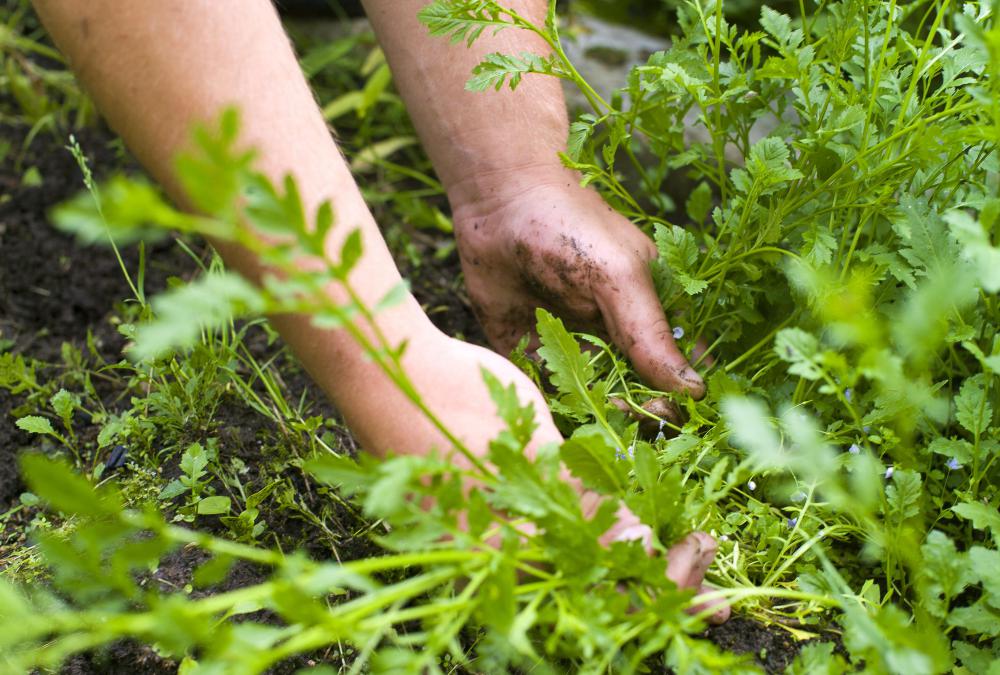At WiseGEEK, we're committed to delivering accurate, trustworthy information. Our expert-authored content is rigorously fact-checked and sourced from credible authorities. Discover how we uphold the highest standards in providing you with reliable knowledge.
How do I Choose the Best Landscaping Fabric?
The best landscaping fabric should prevent weed growth and allow water, nutrients, and air to pass through its surface. This type of material may be biodegradable or designed to withstand many years of weathering. Consumers should avoid using plastic fabrics as they can suffocate plants and promote the growth of harmful bacteria in the soil.
Landscaping fabric is a breathable material that is used in gardens to prevent the growth of weeds and unwanted grass. The material chosen should allow water and air to pass through its surface and soak into the soil beneath, while preventing sunlight from reaching errant weed seeds. Gardeners may prefer that their fabrics are biodegradable and decay into the soil over time. Other users prefer that the fabric maintain its integrity for several years before requiring replacing. Products are available to meet both needs and suit virtually any type of product.

Common household newspaper is an excellent source for a cheap, biodegradable landscaping fabric. This material holds moisture and warmth into the soil while allowing water, nutrients, and air to circulate around plants in the garden. Sheets may be laid down between four and six layers thick to prevent the germination of weeds and smother existing plants. This material does decay over a relatively short amount of time, and gardeners may wish to use it only in projects where it can be replaced annually, such as flower beds which require seasonal mulching.
Gardeners and landscapers who want a fabric that does not require frequent maintenance should purchase a product that is durable and stiff. These fabrics are commonly used beneath rock and gravel mulching, which do not need to be replaced over time and can be burdensome to move if the fabric fails. Purchasers can test the product in the store by attempting to tear a small corner with their bare hands. If the fabric can be pulled apart manually, then it will not create a long lasting barrier against weeds which will similarly break through to reach sunlight.
Gardeners should avoid using any type of plastic material as a landscaping fabric. This type of product, while durable and long lasting, is too tightly woven to allow air, water, and nutrients to penetrate through to the soil beneath. Plants are easily starved when surrounded by plastic sheets used to prevent weed growth. It can also hold ground water and heat in, providing a breeding ground for bacteria and fungi which feed on plant life.
Homeowners who are experiencing aggressive weed germination and growth in their gardening projects beyond the capabilities of other fabrics may benefit from contacting a local landscaping contractor. Depending on local product stocking, some high quality brands are not available to consumers commercially. Professional contractors are occasionally willing to sell some of their own contractor grade landscaping fabric to consumers who cannot purchase it otherwise. They have typically experimented with many types of fabric and have, after many years of experience in the industry, found a fabric that does not tear easily and can withstand many years of weathering.
AS FEATURED ON:
AS FEATURED ON:











Discuss this Article
Post your comments